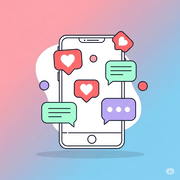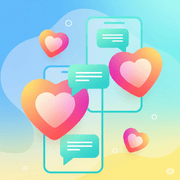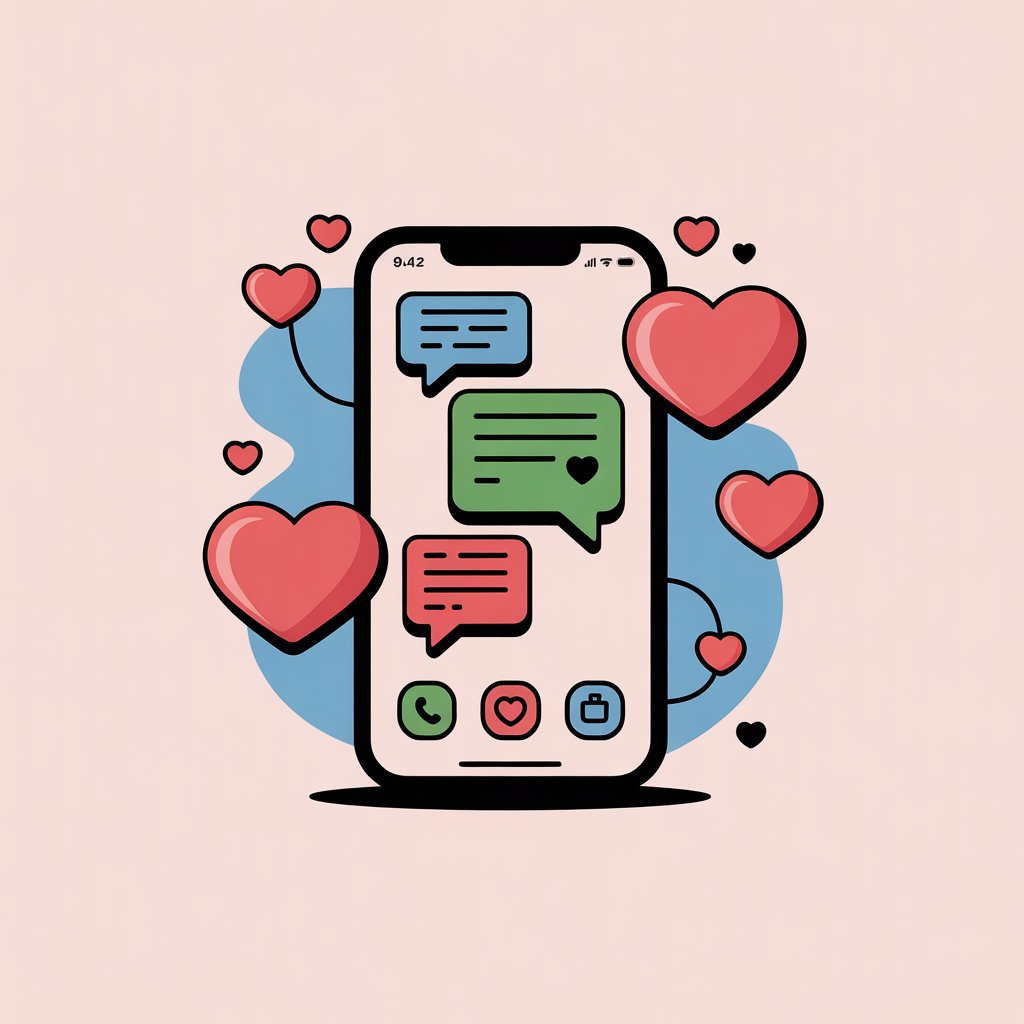The American digital dating scene is a bustling, crowded metropolis. With hundreds of apps vying for the attention of millions of singles, it’s a digital land of opportunity, but also one of fierce competition. For every household name like Tinder or Bumble, there are countless others that launch with high hopes only to fade into obscurity. So, what’s the secret recipe? What separates a fleeting trend from a fixture on a user’s home screen?
It’s far more than just a slick logo and a promise of love. The anatomy of a popular dating app in the United States is a complex blend of psychological insight, cutting-edge technology, and savvy business strategy. It’s about understanding the deep-seated desires and modern-day frustrations of daters and crafting an experience that feels not just useful, but intuitive, safe, and genuinely enjoyable. This article delves into the hot trends and core components that truly define what makes a dating app popular in the US today.
The Foundation: Seamless User Experience (UX) and Intuitive Design
Before a user ever sees a potential match, they interact with the app’s design. This first impression is critical. If the app is clunky, slow, or confusing, users will churn without a second thought. A stellar user experience is the bedrock upon which all popular dating apps are built.
Effortless Onboarding
The sign-up process should be as frictionless as possible. Popular apps have mastered the art of a quick, streamlined onboarding. They often allow users to sign up with existing social media accounts or a phone number, minimizing the number of fields to fill out manually. The initial profile setup is guided, prompting users for essential information (photos, a short bio, basic preferences) in a way that feels more like a fun quiz than a chore. The goal is to get the user to the core experience—seeing other profiles—as quickly as possible while still gathering enough data to provide value.
Clean and Uncluttered Interface
Less is more in the world of mobile app design. The most successful apps prioritize a clean, visually appealing interface that is easy to navigate. Key actions like swiping, messaging, and accessing your profile should be immediately obvious. A cluttered screen with too many buttons, ads, and features can be overwhelming and detract from the primary goal of connecting with people. White space is used effectively to give content room to breathe, making profiles easier to read and photos more impactful.
The “Secret Sauce”: Sophisticated Matchmaking Algorithms
At the heart of any dating app is its matchmaking algorithm. This is the technology that sifts through millions of users to present a curated list of potential partners. While the exact formulas are closely guarded secrets, the most effective ones go far beyond simple filters like age and location.
Personality-Driven Matching
Apps like Hinge and OkCupid have built their brands on the promise of deeper connections. They use extensive questionnaires and unique, text-based prompts to gather rich data about a user’s personality, values, communication style, and relationship goals. Hinge’s famous prompts (e.g., “I’m looking for…”) encourage users to showcase their personality rather than just their pictures. The algorithm then uses this qualitative data to find users who are not just physically compatible, but intellectually and emotionally aligned.
Behavior-Based Learning
Tinder, the pioneer of the swipe, relies heavily on a behavior-based algorithm. Every swipe you make is a data point. The app learns who you’re interested in based on your actions—not just who you swipe right on, but also who you swipe left on, the information in their profiles, and even how active you are. This ELO-style system constantly refines the profiles it shows you, creating a dynamic and adaptive matching experience that improves over time.
The Growing Role of AI in Matchmaking
The next frontier is the integration of Artificial Intelligence (AI). AI can analyze data on a much more granular level. It can assess photo compatibility (detecting smiles, outdoor settings, or pets), analyze the sentiment and complexity of bio text, and predict compatibility with a higher degree of accuracy. Some apps are even experimenting with AI-powered icebreakers or conversation coaches to help users overcome the initial awkwardness of messaging.
Finding Your Tribe: The Power of Niche Markets
While giants like Bumble and Tinder aim to serve everyone, there’s a powerful and growing trend toward specialization. Niche dating apps cater to specific demographics, religions, interests, or lifestyles. This approach combats the overwhelming feeling of “choice paralysis” found on larger platforms and offers users a higher probability of finding someone with shared core values from the outset.
This targeted approach creates a strong sense of community and belonging. Users feel understood and are more likely to find matches who “get it” without lengthy explanations. For many, the quality of potential matches on a niche app far outweighs the quantity on a mainstream one.
Popular Niche Dating App Categories
- Religion-Based: Apps like Christian Mingle (for Christian singles), JSwipe (for Jewish singles), and Salams (for Muslim singles) are incredibly popular because they cater to users for whom faith is a primary component of a long-term partnership.
- Lifestyle & Interest-Based: This is a rapidly expanding category. HER is a leading app for lesbian, queer, and bisexual women, creating a safe and inclusive space. Kippo connects gamers, while Raya is an exclusive, application-based app for people in creative industries.
- Demographic-Based: Apps like BLK and Chispa are designed to serve the Black and Latino communities, respectively. They focus on cultural relevance and shared experiences, which are powerful drivers of connection.
Generalist vs. Niche App: A Comparison
| Feature | Generalist App (e.g., Tinder) | Niche App (e.g., HER) |
|---|---|---|
| Target Audience | Broad, all demographics (18-50+) | Specific (e.g., LGBTQ+ women and queer people) |
| User Base Size | Very Large (Tens of millions) | Smaller, more focused (Millions) |
| Primary Goal | Volume and activity; caters to a wide range of intentions from casual dating to serious relationships. | Community building and connection based on shared identity and values. |
| Key Features | Swipe mechanism, location-based matching, Super Likes, Boosts. | Community feeds, event listings, detailed sexuality and gender identity options. |
More Than Just Swiping: Fostering Engagement and Connection
The novelty of swiping has worn off. Users now suffer from “swipe fatigue” and are looking for more meaningful ways to interact. Popular apps are evolving into social ecosystems that encourage active participation beyond the initial match.
Gamification Elements
Gamification uses game-like mechanics to make the user experience more compelling and fun. This can include daily “stacks” of recommended profiles, earning in-app currency for logging in, or creating a sense of urgency with a limited number of likes per day (as seen in Hinge’s free version). These elements keep users coming back and encourage more thoughtful decision-making.
Integrated Communication Tools
The conversation is where connections are actually made. Leading apps are investing heavily in their messaging features. Video calls and voice notes have become standard, allowing users to build rapport and verify chemistry before meeting in person. Some apps, like Bumble, even include in-chat games to serve as fun, low-pressure icebreakers.
Building Trust: Prioritizing Safety and Security
In the world of online dating, trust is the most valuable currency. Users are sharing personal information and making themselves vulnerable. A single high-profile incident involving scams or harassment can permanently damage an app’s reputation. As such, robust safety features are no longer optional—they are a core requirement for success in the US market.
Users are increasingly aware of the risks, from catfishing to more serious threats. An app that demonstrates a clear commitment to user safety will always have a competitive advantage. According to the Federal Trade Commission (FTC), reports of romance scams are on the rise, making proactive safety measures more critical than ever.
Must-Have Safety Features for a Modern Dating App
- Robust User Verification: This is the first line of defense. Features like mandatory photo verification, where a user takes a real-time selfie that is matched to their profile pictures, are becoming standard. Linking to other social media profiles can also add a layer of authenticity.
- Proactive Content Moderation: Relying solely on user reports is not enough. Successful apps use a combination of AI and human moderators to proactively scan for fake profiles, scam-like language, and inappropriate photos or text.
- User-Controlled Privacy Tools: Users need to feel in control of their experience. This includes easy-to-find block and report functions, options to hide their profile from certain people (like Facebook friends or contacts), and clear control over what information is public.
- Safe Dating Education: Many top-tier apps now include in-app safety centers or blog posts that provide tips on how to spot red flags, avoid scams, and plan a safe first date.
Smart Monetization That Doesn’t Alienate Users
Dating apps are businesses, and they need to make money. However, the way they monetize can have a huge impact on their popularity. The dominant model in the US is “freemium,” where the core functionality of the app is free, but users can pay for enhanced features.
Tiered Subscriptions
The most common strategy is a tiered subscription model (e.g., Plus, Gold, Platinum). Each tier unlocks a new set of powerful features. Common premium features include:
- Unlimited Likes/Swipes: Removing the daily limit imposed on free users.
- See Who Likes You: A highly coveted feature that removes the guesswork of matching.
- Advanced Filters: The ability to filter matches by education, political leaning, height, and other specific criteria.
- Travel Mode: The ability to change your location to match with people in other cities before you travel.
The Fine Line: Avoiding a “Pay-to-Win” Feel
The crucial balance is ensuring the free version of the app remains functional and enjoyable. If free users feel that their experience is so restricted that they have no chance of making a connection without paying, they will abandon the platform. The best apps make premium features feel like a valuable “power-up” rather than a necessity, as discussed in publications like TechCrunch covering app monetization trends.
Conclusion: The Ever-Evolving Formula for Success
There is no single magic bullet for creating a popular dating app in the United States. Success is a moving target, built on a foundation of deep user understanding and relentless innovation. The winning formula is a sophisticated cocktail of elements: a frictionless user experience, an intelligent algorithm that delivers quality matches, a strong sense of community whether broad or niche, and an unwavering commitment to user safety. Apps that master this combination don’t just help people find dates; they build trust and become an integral, positive part of modern social life.
Looking ahead, the trends point toward even greater personalization through AI, the growth of hyper-niche communities, and the blending of digital and real-world experiences through in-app events. The apps that will dominate the next decade will be those that not only understand the technology but also the humanity behind every swipe. As confirmed by comprehensive research into what makes a dating app popular in the US, users are seeking genuine connections in a safe and efficient digital environment, and the platforms that deliver on that promise will ultimately win their loyalty.



